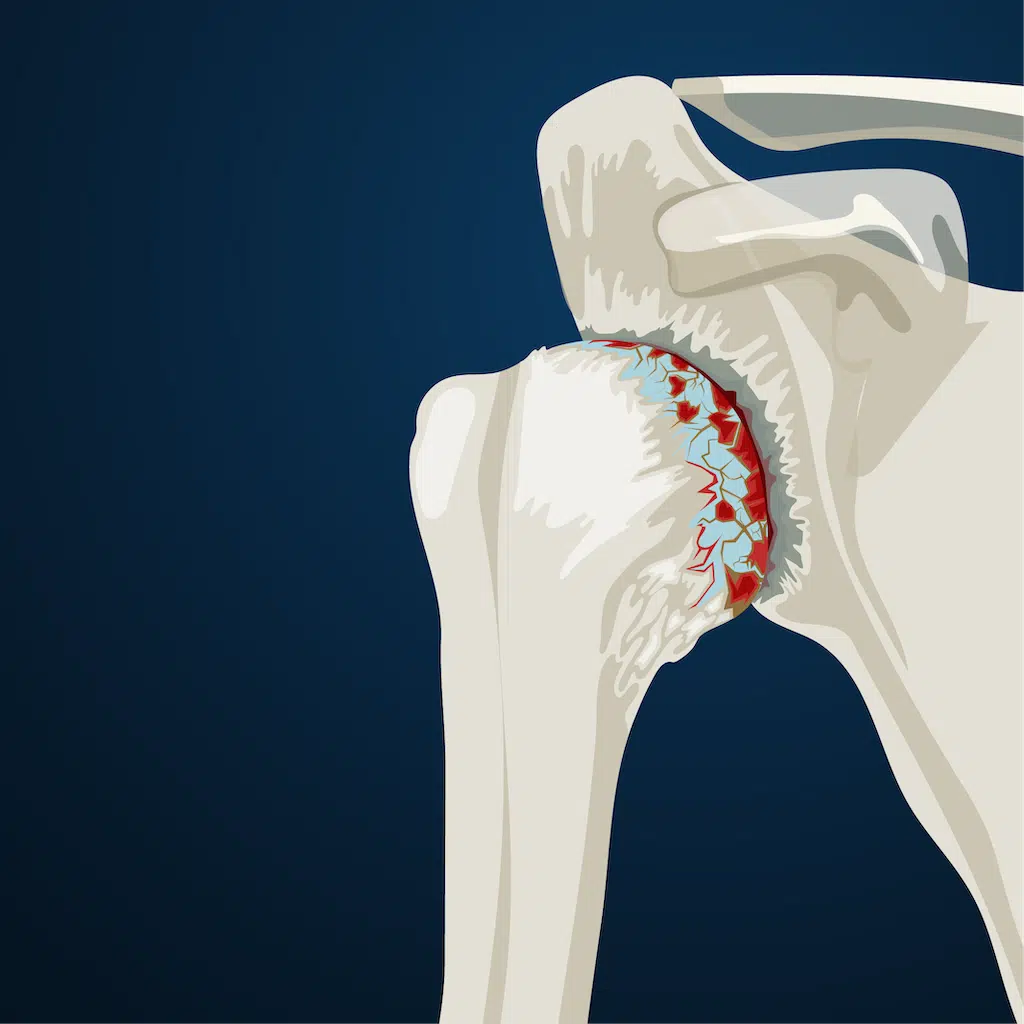What Is Glenohumeral Osteoarthritis?
Glenohumeral osteoarthritis is a degenerative condition in which the cartilage covering the ball (humeral head) and socket (glenoid) of the shoulder joint progressively wears away. As this cartilage deteriorates, the bones begin to rub directly against each other, causing pain, stiffness, and limited motion. This is the most common type of arthritis affecting the shoulder’s ball-and-socket joint.
Causes and Risk Factors
-
Natural aging and “wear and tear” over time
-
Previous shoulder injury or fracture
-
History of rotator cuff tear or shoulder instability
-
Repetitive overhead activity or heavy labor
-
Autoimmune conditions such as rheumatoid arthritis
-
Genetic predisposition
Symptoms
-
Gradual onset of deep shoulder pain, especially during activity
-
Stiffness and reduced range of motion
-
Difficulty with overhead tasks, reaching behind the back, or lifting
-
Shoulder crepitus (grinding or clicking sounds with movement)
-
Pain at night, often disturbing sleep
-
Muscle weakness around the shoulder
Diagnosis
-
Physical exam assessing motion, tenderness, and joint mechanics
-
X-rays reveal:
-
Joint space narrowing
-
Bone spurs (osteophytes)
-
Sclerosis or cyst formation
-
-
MRI or CT scan may be used for detailed surgical planning or evaluation of surrounding soft tissues
-
Diagnostic joint injection may confirm that the source of pain is within the glenohumeral joint
Treatment
Non-Surgical Treatment
-
Activity modification to reduce pain-inducing motion
-
NSAIDs for pain and inflammation
-
Physical therapy to:
-
Maintain joint mobility
-
Improve shoulder mechanics and reduce compensatory strain
-
-
Corticosteroid injections to reduce inflammation and provide temporary relief
-
Viscosupplementation (in select cases) to lubricate the joint
Surgical Treatment
-
Considered when symptoms are severe or unresponsive to conservative care
-
Options include:
-
Total shoulder replacement (anatomic or reverse) for advanced arthritis
-
Hemiarthroplasty (replacement of only the humeral head)
-
Arthroscopic debridement in early-stage arthritis
-
Recovery Outlook
-
With non-surgical care, symptoms can often be managed for months or years
-
After surgery:
-
Hospital stay is usually 1–2 days
-
Shoulder sling for 2–4 weeks
-
Physical therapy begins within the first week
-
Return to daily activities typically within 3–4 months
-
Full recovery and return to higher-level function by 6–9 months
-
Why Kerlan Jobe Institute?
The joint specialists at Kerlan Jobe Institute are leaders in the diagnosis and treatment of shoulder arthritis. Whether through advanced surgical options or customized non-operative plans, our team provides personalized care to restore function and quality of life.

